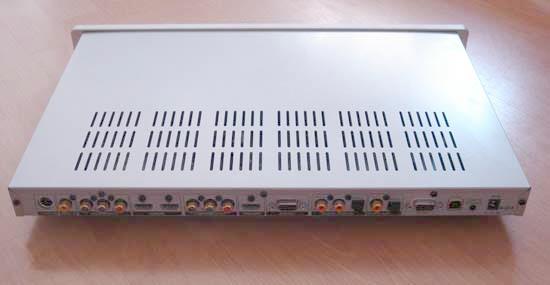Introduction
The DragonFly is one of this year's highly anticipated
video processors, by Algolith, a Canadian company dealing primarily with
video processing and image enhancement algorithm solutions.
The Mosquito and the Flea, Algolith's previous
endeavors in the video processing arena, focused on reducing MPEG noise
artifacts (digital noise added by the process of compressing and
decompressing content through digital satellite, OTA or cable systems).
The DragonFly emerged due to the cooperation between Algolith and Silicon Optix
(SO), a California based company that now owns Teranex – the company that is still considered the apex of the video
processing world.
SO's integration of Teranex resulted in the Realta chip, a
very high speed parallel processing chip capable of running Teranex
algorithms like HQV (Hollywood Quality Video), a variation on Teranex's
video processing algorithms.
The cooperation between the companies stems
from the fact that HQV now includes a variation on Algolith's MPEG noise
reducing algorithms. Cross licensing seemed like an obvious choice.
With the DragonFly, Algolith has focused on the
projector market, and this is clearly seen by the menu selections and
options as presented on the DragonFly.
The Design
The unit comes with two options. One is the Noise
Reduction Option, which adds MPEG artifact removal that is apparently unique
to DragonFly's implementation of the HQV system. The
second is the SDI option, which provides a small box that converts
SDI (still a very popular choice for videophiles) into non-copy-protected
HDMI, that allows the DragonFly to support that format as well.

Click on the photo above to see a larger version.
The outer housing on the unit is, simply dazzling, for
the lack of better terminology. A clean anodized brushed aluminum design
with Algolith's infamous metallic prism is on the front. This minimalist design
looks amazing, but the lack of any buttons (including an on/off switch) is
less functional than other devices of this caliber. I can only hope that
other scaler manufacturers start taking notes when looking at this unit,
because they don't realize that video processors are no less of a fashion
statement on part of videophiles than vacuum tube amps are for audiophiles.
Designs should be flashy an inventive, so don't just put your processor in a
dull black box. I want to show off my system, and a video processor is
definitely something I want my visitors to raise an eyebrow at.
The 1U form factor is clearly too tight for
the DragonFly, because it hardly has any room for all the inputs that users might
find useful. It fits just one of each type of input, except for HDMI where
there are two, which is usually enough
for projector owners that usually have two sources. However, some users have
up to six sources, so it would be nice to have more inputs.
Click Here to Go to Part II.